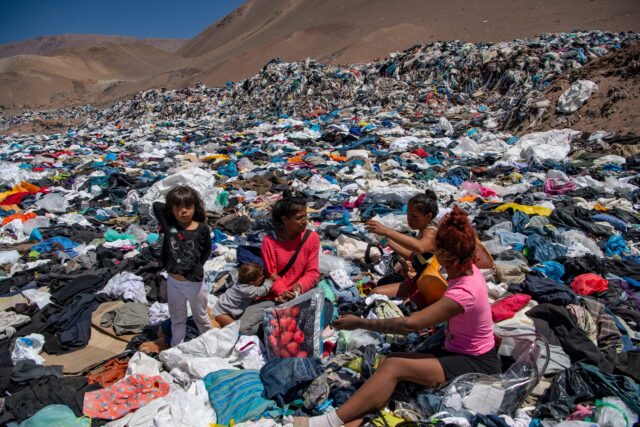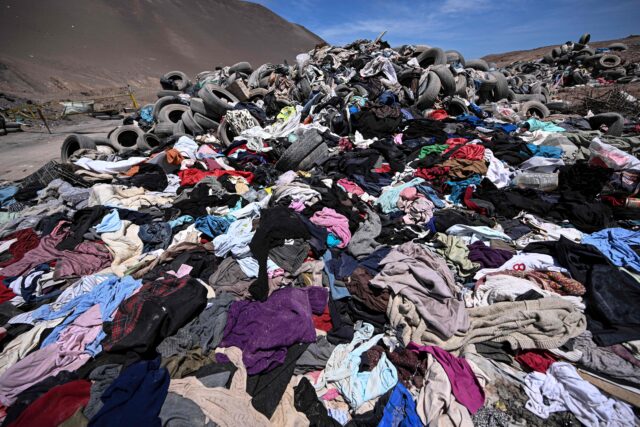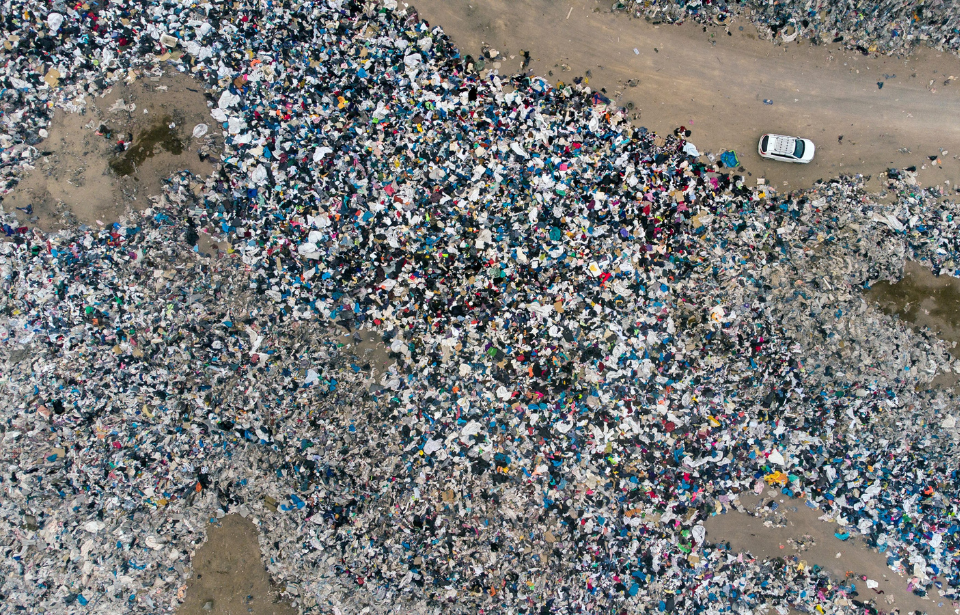There are mountains of stone and dunes of sand – and, now, even mountains of clothing. Clothing waste has been produced in such large quantities that landfills bearing insurmountable piles of these garments are now visible from space. The impact fast fashion has on the environment is a lot more significant than most people realize, as these products are often not biodegradable.
How the ‘fast fashion’ mountain was formed
By purchasing a $44 Existing Image at 50 cm resolution, we can confirm the giant clothes pile in the desert of Chile exists and is growing. https://t.co/47SssKPdtI pic.twitter.com/RlfUSBWbu9
— SkyFi (@SkyfiApp) May 10, 2023
Located beside the Iquique port in Chile‘s Atacama Desert sits a mountain of discarded clothing that’s been building up for years. The pile has become so large that the company SkyFi, developers of a satellite photo and video app, have captured an image of the waste pile from space.
“The 50 cm resolution image, which is classified as Very High Resolution, was taken using satellite imagery, and it shows how big the pile is compared to the city in the bottom of the picture,” the developers wrote on their blog, as they revealed the photos of the clothing mountain on May 10, 2023.
Clothing that can’t be sold in the United States, Europe, or Asia, which has been estimated to weigh up to 59,000 tons a year, is shipped to Latin America for resale. However, only about 20,000 tons of that make it across the continent, with the other 39,000 ending up at the landfill in the desert.
A lot of these garments are not biodegradable and contain toxic chemicals, meaning they’ll possibly sit in the landfill for centuries.
It’s no one’s responsibility to clean it up

The mountain‘s position in the Alto Hospicio free zone of northern Chile is critical, as it means it’s no one’s responsibility to clean it up, nor does anybody have to pay tariffs to try and take the clothing away. As such, the mountain just continues to grow every year.
It’s also located close to some of the poorer neighborhoods in Iquique, so a lot of locals and migrants scour through the landfill to try and find less-damaged items that they can wear themselves or try to resell in the city.
While the growth of the mountain of clothing seems never-ending, one company is trying to use the discarded garments in other ways, to reduce the amount of waste. EcoFibra takes these post-consumer items and transforms them into insulation panels that can be used in housing construction.
The company’s founder, Franklin Zepeda, said that, with the growing issue of clothing waste, “I wanted to stop being the problem and start being the solution.”
Fast fashion is at the heart of the problem

The biggest contributor to the clothing waste problem is the “fast fashion” industry, which tries to bring quick-changing trends to consumers in an affordable way. It encourages frivolous consumerism, hoping buyers will continue to purchase as new fads come and go. In 2021, fast fashion’s market size was $106.4 billion. In 2023, it will likely hit $122.9 billion. This is a major increase that will no doubt have damaging effects on the environment.
As of now, fast fashion contributes about two-to-10 percent of the world’s total carbon emissions. All of the clothing being made is barely even purchased by consumers, with nearly 85 percent of all the textiles ending up in dumps like the one in Chile. According to the Ellen McArthur Foundation, enough clothing to fill an entire garbage truck is sent to a landfill every second.
Additionally, the fast fashion industry uses a large amount of water – we’re talking about 7,500 liters just to make a single pair of jeans. The UNCTAD estimates the industry uses about 93 billion cubic meters of water every year. For context, that’s enough to provide five million people with clean drinking water.
More from us: The Unassuming L.A Site That Played a Major Role in the Silent Film Era
The water waste produced by clothing manufacturing also pollutes our planet’s rivers and streams. “When we think of industries that are having a harmful effect on the environment, manufacturing, energy, transport and even food production might come to mind,” a UN report explained. “But the fashion industry is widely believed to be the second most polluting industry in the world.”
